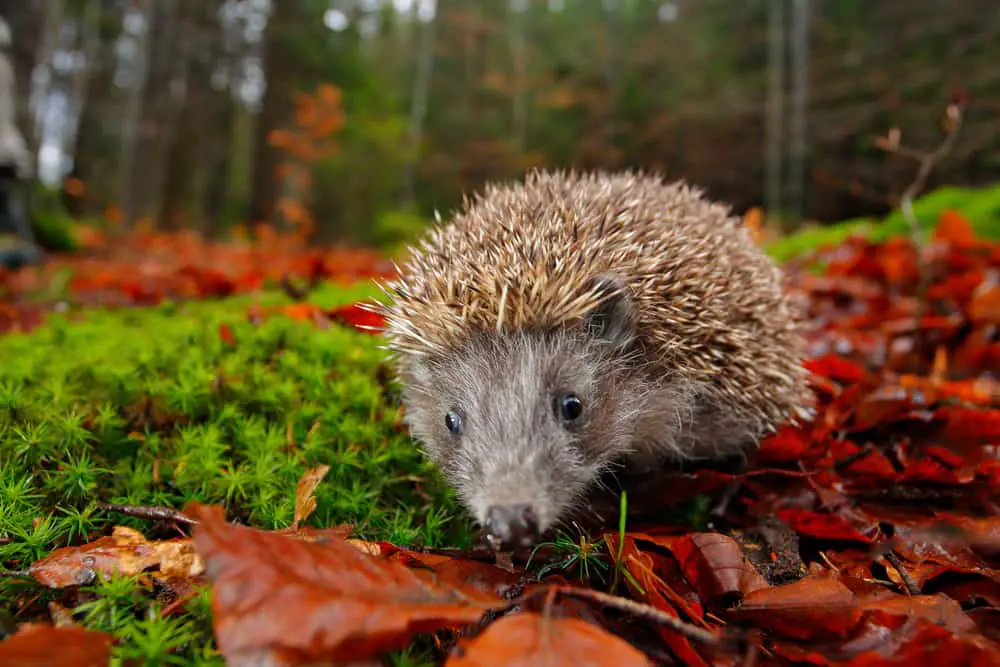
Whether they are scaly, furry, hairy, slippery, feathered, or fluffy, animals come with all types of coverings and interesting textures. But there are some animals you wouldn’t ever want to cuddle, no matter how cute they appear.
The reason is that they are covered in sharp, spikey quills that might make getting up close to them a painful experience. Which animals have quills? Let’s find out!
Animals with quills fall within four major groups of mammals: hedgehogs, tenrecs, echidnas, and rodents, which include the most intimidating members of all, porcupines. Modified hair on these animals has hardened to form solid outer tubes of keratin that face outward for protection.
And being a super-spikey ball of spines is exactly how quilled animals like it. Even a hungry lion knows better than to try to take a bite out of a plump porcupine’s spikey armor. Quilled animals have developed their spikey hairstyles to adapt to survive in their environments.
These unique and fascinating creatures are usually fairly small in size but demand respect even from the biggest hunters.
Table of Contents
- What Do All Animals That Have Quills Have In Common?
- Do Porcupines Ever Injure Themselves With Their Own Quills?
- Can Quilled Animals Shoot Them Out When Attacked?
- Conclusion
What Do All Animals That Have Quills Have In Common?
Quilled creatures are, without exception, mammals. True quills or spines are modified hairs that have thickened and hardened and create a protective shield of needle-sharp spikes to deter predators. These stiff quills that are sometimes barbed are composed of keratin, the same material as horn, hair, claws, and nails.
There are animals with quills on every continent except Antarctica. Despite their spiny covering, they are often elusive, usually nocturnal. There is a slight scientific difference in the definitions between quills and spines, but these words are often used interchangeably.
Spines – Any hair that has hardened and is spikey
Quills – A specific kind of spine. They have a spongy inside core.
While quilled animals may all look related, the types of quills on various species are often quite different. Some animals are entirely covered in spines, while others have longer quills clumped in specific areas to offer protection where they may need it more. Besides just having quills for protection, these spikey needles also have other functions.
Quills are used to communicate, act as shock absorbers, camouflage, and a covering of hard spikes conveniently never gets soaked in the rain like fur.
There are four groups of animals that have quills. These are:
- Hedgehogs
- Tenrecs
- Echidnas
- Rodents
Although each of these groups includes species that sport quills, each is unique in appearance and characteristics. These mammals evolved independently in multiple places, so there are significant variations in species that have quills.
1. The Spiniest Of All The Quilled Animals: Hedgehogs
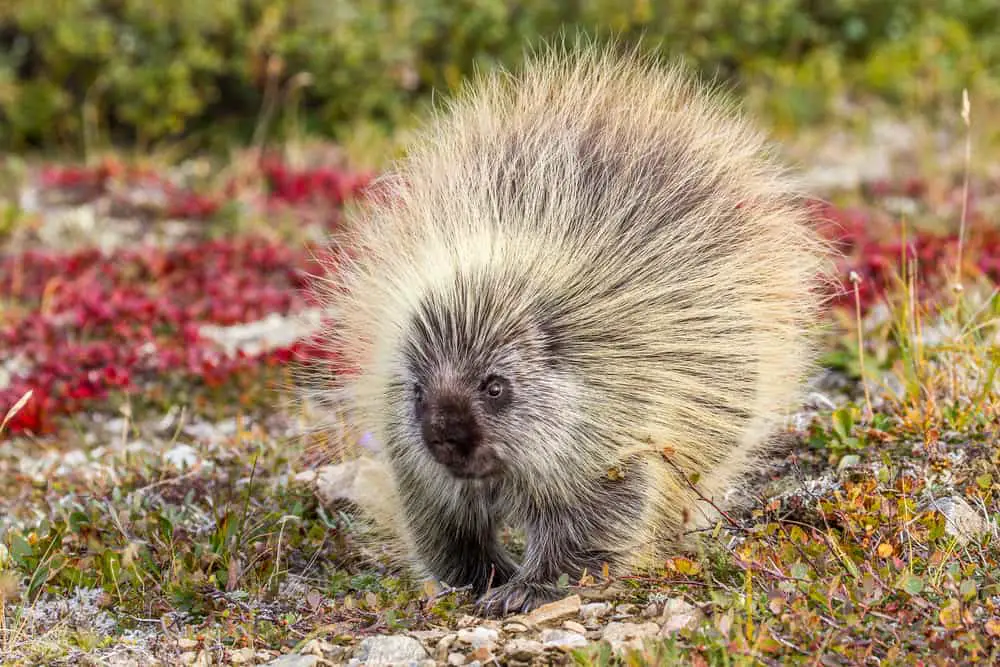
Hedgehogs are the spiniest of all the quilled animals. On average, a hedgehog has over 5000 unbarbed and undetachable quills – that means that they don’t fall out like you would expect if the animal is under attack.
Why Are Hedgehogs Called ‘Hedgehogs’?
Hedgehog is an ancient name that comes from Middle English. These little spiny animals were observed around hedges they seemed, to the people of the 1400s, to have a pig-like snout, so they combined the two ideas, and the term ‘hedgehog’ has been with us ever since.
How Many Species Of Hedgehogs Are There?
There are 17 species of hedgehogs
Where Do Hedgehogs Occur?
Hedgehogs are native to Europe, Asia, and Africa. There are hedgehogs in New Zealand, but they are an introduced species and do not occur naturally. They have, in fact, become a pest in New Zealand as they prey on indigenous frogs, snails, and insects.
What Do Hedgehogs Eat?
Hedgehogs are omnivorous, which means that they eat both plant and animal matter. Wild hedgehogs feed on insects, berries, frogs, eggs, fruit, and roots. They are also opportunistic and will eat baby birds and rats if they find them.
When Are They Active?
Most species of hedgehog are nocturnal, which means that they are more active at night. They usually hide away and sleep during the day and emerge at dusk to begin foraging.
What Type Of Quills Do They Have?
Hedgehog quills, or prickles as they are sometimes called, are short, sharp, and relatively uniform in length. They cover the entire body of the animal except for its face, feet, and belly. The quills are fixed and don’t become unattached if the animal is attacked.
What Do They Use Their Quills For?
If the animal feels threatened, it quickly tucks its vulnerable head in and rolls into a spikey ball. Since the quills are relatively elastic and uniform in length, it is also thought that they may function as a shock absorber for the animal’s internal organs.
Hedgehogs are known to climb trees while foraging, and falling doesn’t seem to be any problem for these little creatures who quickly curl into a ball to cushion the impact.
2. Tenrecs
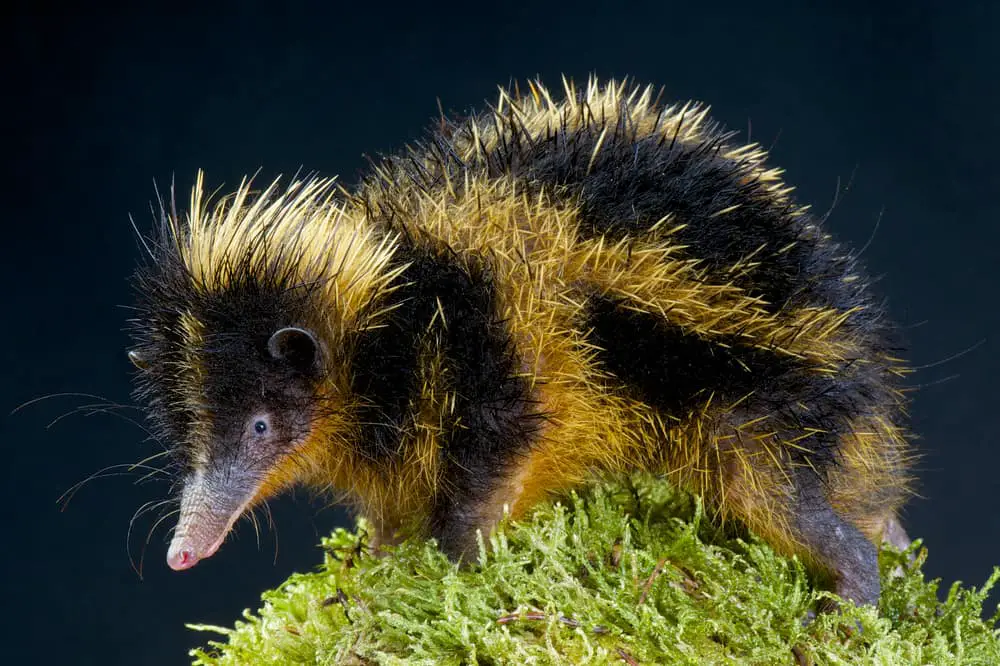
Tenrecs resemble hedgehogs, but they have got longer snouts. Some species of tenrec also have distinct little tails that stick out from under their quilled armor.
While their bodies do look a lot like hedgehogs, and they also roll into a ball when threatened, they are more closely related to aardvarks and elephants than to their tiny hedgehog counterparts.
These super-cute, small to medium-sized animals are the only type of spiny animals known to communicate with each other by rubbing their stiff quills together, which produces a low sound called stridulation. They use this sound to communicate while foraging, socializing, courting, fighting, and exploring.
3. Echidnas
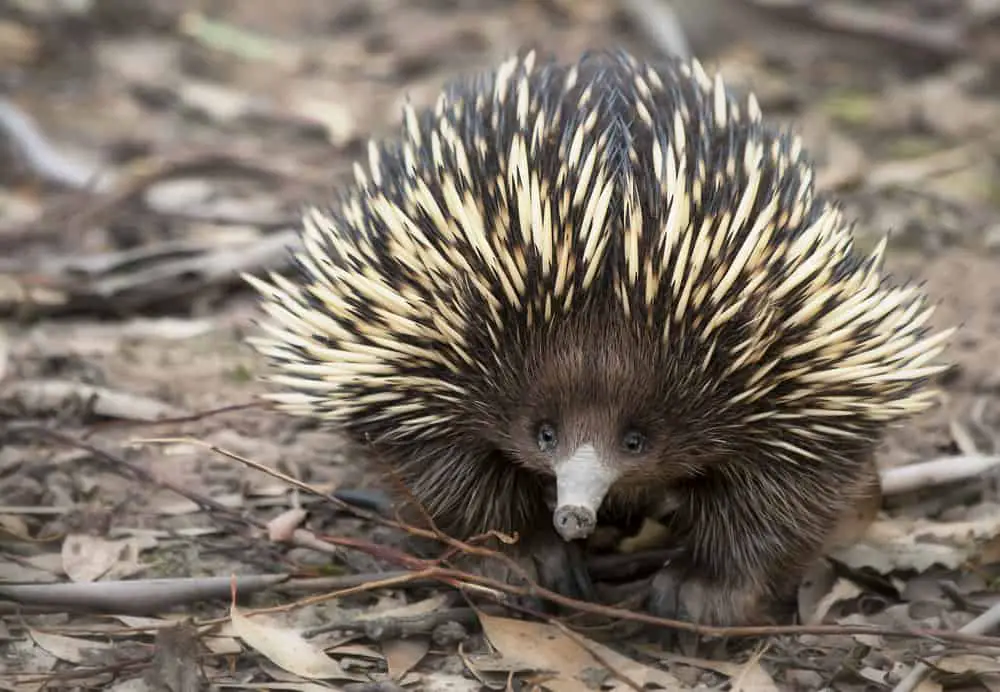
Echidnas are unique among animals, not only because they have quills but because they are one of only two species of mammals that lays eggs. The other is another Australian animal called a platypus. Echidnas may have spines, like hedgehogs and tenrecs, but they are not related to any other type of quilled animal.
They are massive compared to tiny tenrecs or hedgehogs and can weigh up to 35 pounds when fully grown.
Echidnas are also sometimes called spiny anteaters, although they are not related to any species of anteaters. These quilled animals have a beak like a bird but have modified hair that presents as spines, so their bodies look a lot like hedgehogs.
The shape of their long beaks resembles the features of anteaters on other continents. They use this beak for breathing and foraging.
What Does The Word ‘Echidna’ Mean?
Echidna is a creature from Greek mythology that was half woman and half snake. When classifying these unique little quilled creatures, they didn’t seem to fit neatly into either the reptile or mammal category, so the word echidna was a way of categorizing them.
How Many Species Of Echidna Are There?
There are only four species of echidnas.
Where Do Echidnas Occur?
Echidnas are only native to Australia and New Guinea.
What Do Echidnas Eat?
Echidnas dig for food which consists of ants, termites, and any invertebrates that it finds. It has a long and extremely sticky tongue that helps it to extract ants from mounds and underground passages. They have a beak-like bird and don’t have any teeth.
When Are Echidnas Active?
Unlike most other quilled animals, echidnas are active during the day, but they become nocturnal to avoid the heat if the weather becomes too hot.
What Type Of Quills Do Echidnas Have?
The quills of an echidna are short, blunt, and unbarbed. They are thick and not flexible. They resemble hedgehog quills but have a different structure. The core of echidna spines contains a light, foam-like substance.
What Do Echidnas Use Their Quills For?
The quills of an echidna appear to be purely to form a protective armor covering for the animal. They curl up to create a solid, almost impenetrable ball when threatened.
4. Rodents
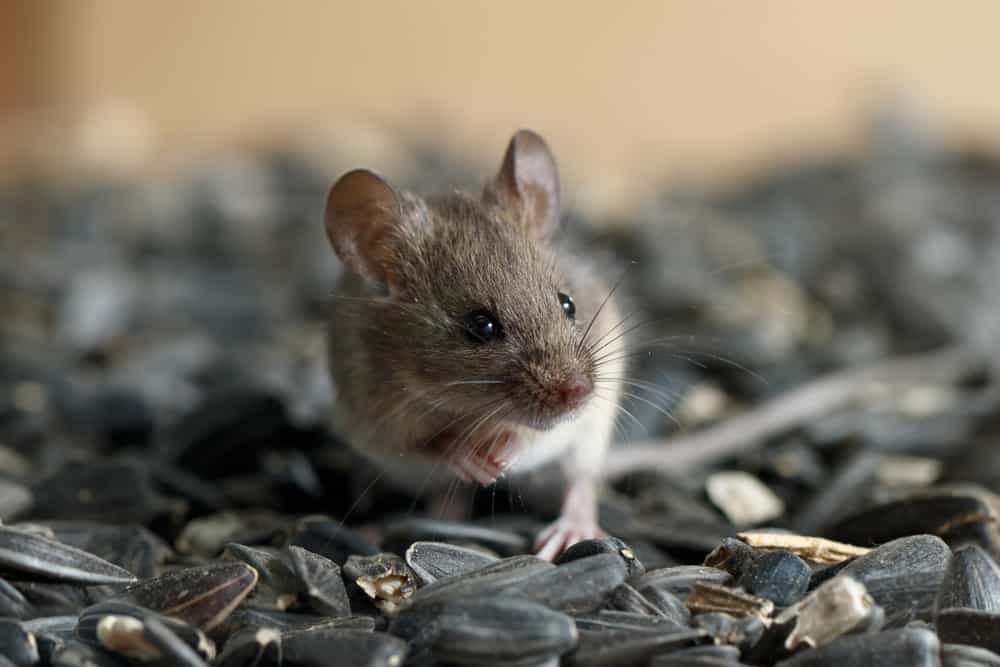
When thinking about animals that have quills, most people immediately think of porcupines. These prickly rodents have evolved an impressive display of varying length quills that is sure to give any predator second thoughts about grabbing a quick meal.
Baby porcupines, called ‘porcupettes,’ are born with quills, but fortunately for their mothers, they remain soft and flexible until several months of age.
What Does The Word ‘Porcupine’ Mean?
Porcupine is a combination of two Latin words that means ‘quill-pig.’ In some regions of North America, this term is still used.
How Many Species Of Porcupines Are There?
There are 58 species of porcupine scattered over two distinct family groups.
Where Do Porcupines Occur?
Old World Porcupines are found in Africa, southern Europe, and some parts of Asia. New World porcupines are generally smaller and occur in wooded regions of North America and some northern parts of South America.
What Do Porcupines Eat?
Old World porcupines, which are generally larger, forage for food at ground level. They are strict herbivores and eat roots, fruits, berries, and tree bark. Unfortunately, they often damage crops in their search for meals.
New World porcupines are also herbivores but are much more agile than their bigger cousins. They can climb trees and eats most green plants, including leaves and twigs.
When Are They Active?
Porcupines are usually nocturnal, although they can occasionally be found foraging during the day.
What Type Of Quills Do Porcupines Have?
Quills of varying lengths are arranged along the back and sides of a porcupine’s body. Most porcupines have an impressive set of quills. They may not be as numerous as hedgehogs or tenrecs, but they are generally long and menacing when erect.
Old World porcupines are covered in coarse bristly hair on areas with no quills, while New World porcupines have much softer fur. The characteristics of the actual quill differ between the two groups as follows:
Old World Porcupines Quills
- Sharp quills are situated on the back and sides of the body
- They are loosely rooted so will easily detach from the porcupine’s body
- Some species have an array of hollow quills located at their tails that produce a rattling noise when vibrated. This sound is likely to deter predators who want to avoid a jab from a sharp spine.
- Quills are not barbed but can penetrate flesh and are pretty brittle, so can quickly cause infection if they break off.
- Quills can be raised defensively
- New quills grow to replace lost ones
New World Porcupine Quills:
- Sharp quills are located on the back and sides of the body
- They have microscopic backward-facing barbs that make them extremely difficult to remove cleanly.
- Quills detach from the animal’s body
- Extremely sharp
- Have soft fur in areas that are not covered with quills
- Quills can be raised defensively
- New quills grow to replace lost ones
What Do They Use Their Quills For?
Unlike hedgehogs, tenrecs, or echidnas, porcupines are unlikely to roll up into a defensive ball when faced with danger. They use their quills to go into full intimidation mode, and most of the time, it works well. Besides flaring up and appearing to be massive, spikey, unappetizing snacks, some porcupines produce a dangerous-sounding rattle to add to the effect.
Do Porcupines Ever Injure Themselves With Their Own Quills?
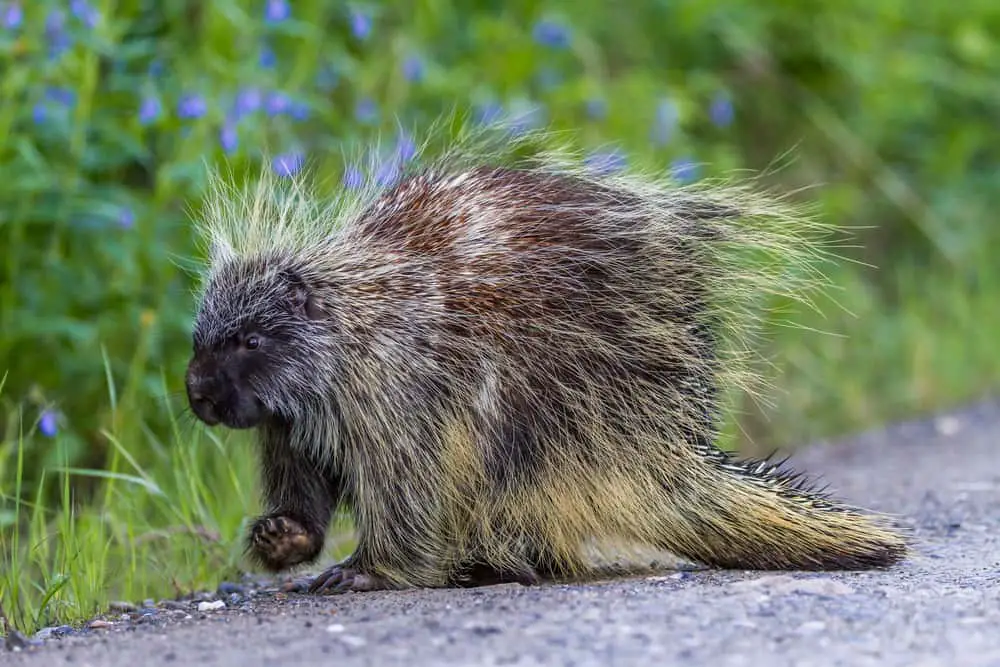
You might expect the occasional accidental self-inflicted jab if you live under a blanket of razor-sharp barbed quills. Fortunately, New World porcupines have skin coated in a natural antibiotic substance that appears to prevent infection from self-inflicted wounds.
Can Quilled Animals Shoot Them Out When Attacked?
There are no species of quilled animals that can propel its quills to attack. Quills are modified hairs, so in the same way, as you can’t shoot any hair out of your head, animals with quills simply have a protective covering and can’t project the spikes. That is not to say that they are not dangerous, and one should always keep a distance or handle them with extreme caution.
As many dogs and coyotes have discovered, the end of a quill under the skin is an excruciating condition.
Conclusion
Quills, sometimes called spines, occur in four major groups of animals: hedgehogs, tenrecs, echidnas, and rodents. Quills are modified hairs that have a hard outer covering of keratin. Evenly sized spines may be evenly spread over the quilled animal’s body and be securely rooted as in the case of hedgehogs and tenrecs or vary in size and be easily detachable as in the case of porcupines.
However, no matter what type of quills are present, one can be assured that getting too close will be a prickly experience!
References:
Animal Diversity: Spikes and Quills
Wonderopolis: Can Porcupines Shoot Their Quills
10 Most Today: 10 Coolest Spiny Animals in the World



